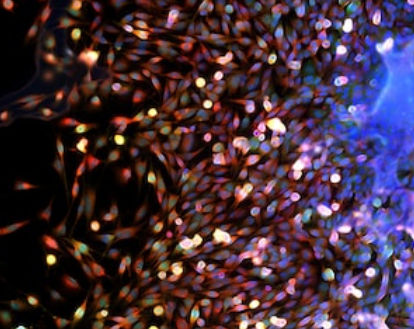Death receptors are key components in the extrinsic apoptotic pathway. Receptors belonging to the tumor necrosis factor (TNF) receptor superfamily mediate a major apoptotic pathway. Due to ligand binding or receptor aggregation, death receptors are activated to trigger the external apoptosis signaling pathway, leading to cell apoptosis. Therefore, the death receptor ligands or agonistic antibodies against the death receptors are potent inducers of apoptosis and thereby have therapeutic potential in the treatment of cancer.

Eight members of the death receptor family:
Molecularly targeted therapies, such as antibodies and small molecule inhibitors have emerged as an important breakthrough in the treatment of many human cancers. One targeted therapy under development is tumor necrosis factor-related apoptosis-inducing ligand (TRAIL) due to its ability to induce apoptosis in a variety of human cancer cell lines and xenografts, while lacking toxicity in most normal cells.
Creative Bioarray has a professional apoptosis research platform. Our services include but are not limited to:
Establishing Cell Lines
Some studies suggest that certain drugs induce apoptosis via ligand‑dependent or independent activation of the death receptor‑mediated extrinsic apoptotic pathway. Creative Bioarray can help you to establish cancer cell lines deficient with one (DR5), two (DR4 and DR5), or even three (DR4, DR5 and Fas) death receptors which will be very helpful to demonstrate the role of death receptor activation in drug‑induced apoptosis. We use the current homologous recombination technology to accomplish such studies. These cell lines would also be valuable for screening cancer therapeutic agents that induce apoptosis through the death receptor‑mediated extrinsic apoptotic pathway.
Developing Small Molecules
Given that TRAIL and agonistic antibodies to DR4 and DR5 exhibit cancer therapeutic potential and their efficacies can be enhanced by small molecules, DR4 or DR5 should be a good target for the discovery of anticancer drugs. Some clinically‑used drugs that potently increase the expression of TRAIL death receptors and enhance TRAIL‑induced apoptosis have simple chemical structures and could be considered lead compounds for further modification.
Developing Assays for Screening Agents
An important step is to develop assays for screening agents that upregulate TRAIL death receptors. To do so, we need a better understanding of general mechanisms by which TRAIL death receptors are induced.
Detecting Response to Therapeutic Drugs in Vivo
Certain cancer therapeutic agents are weak inducers of apoptosis in cell culture, but potently upregulate the expression of death receptors and cooperate with exogenous TRAIL to induce apoptosis. Therefore, it is important to consider the in vivo situation where stromal cells may impact the growth of tumors and the response of tumor cells to therapeutic drugs. Currently TRAIL‑null156 and or Fas‑null157 mice are available and thus make these studies possible.
Creative Bioarray has rich research experience in the research of death receptor-related targets. Relying on a professional equipment platform and an experienced scientific research team, we can guarantee the high-quality completion of your project.

Professional Platform and Excellent Team
We have a professional technical platform, equipped with advanced instruments and talented and well-trained experts.
Committed to Quality
We put quality first. We provide high-quality products, services and solutions to support customers worldwide.
World-class Service Capabilities
We provide one-stop service, from order to final report, to provide the best solution for your research. We hope to help you complete your research more easily and efficiently.
Customer-centric
We adhere to a mutually beneficial and win-win cooperation model, pay attention to customer needs and goals, and create the greatest value for customers.
If you are interested in our services, please contact us for more detailed information.
Online Inquiry